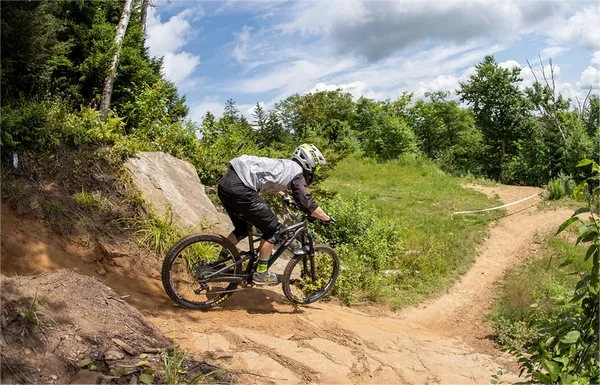Cycling is a popular form of exercise that offers numerous benefits to the body, including improved cardiovascular health, muscle strength, and flexibility. However, cycling can also put pressure on the knees, especially if you have an existing knee injury or condition. This article will explore whether bicycle pump tracks are safe for individuals with knee injuries and provide some tips on how to cycle safely while managing knee pain.
Knee Injuries and Common Causes
Knee injuries are common among athletes and non-athletes alike. They can range from minor sprains and strains to more severe conditions like torn ligaments or fractures. Some common causes of knee injuries include overuse, sudden impact, poor posture, and weak muscles around the knee joint. If you have a history of knee injuries or conditions like arthritis, it’s essential to consult with a healthcare professional before starting any new exercise regimen, including cycling.
How Bicycling Affects the Knees
Cycling is a low-impact activity that puts minimal stress on the knees compared to activities like running or jumping. However, the repetitive motion of pedaling can still cause strain on the knees, especially if your bike setup is incorrect or if you’re not using proper form. Additionally, climbing hills or riding up steep inclines can increase the pressure on your knees.
Is Bicycle Pump Track Safe for Knee Injuries?
A bicycle pump track is a specially designed course that features banked turns and rollers, allowing riders to build momentum and perform tricks without the need for pedaling. While pump tracks can be a fun way to improve your cycling skills and fitness level, they may not be suitable for individuals with knee injuries. The constant changes in terrain and the need to maintain balance can put additional stress on the knees, potentially exacerbating existing injuries or causing new ones.
See Also: How to Stand Up on a Paddle Board with Bad Knees
Tips for Cycling Safely with Knee Injuries
If you have a knee injury or condition but still want to enjoy cycling, there are several tips you can follow to minimize the risk of further damage:
- Get a proper bike fit: Ensure that your bike is set up correctly for your body type and height. This includes adjusting the seat height, handlebar position, and pedal placement.
- Use proper form: Keep your back straight and engage your core muscles while cycling. Avoid leaning too far forward or backward, which can put additional pressure on your knees.
- Start slow and gradually increase intensity: If you’re new to cycling or returning from an injury, start with short, low-intensity rides and gradually increase the duration and difficulty over time.
- Choose flat terrain: Avoid steep hills or rough terrain that can put additional stress on your knees. Stick to smooth, flat surfaces whenever possible.
- Take breaks and stretch: Take regular breaks during your ride to stretch your legs and give your knees a rest. Focus on stretching the muscles around the knee joint, such as the hamstrings and quadriceps.
Alternative Exercises for Knee Injuries
If cycling is too strenuous on your knees, there are plenty of alternative exercises that can help you stay active and improve your overall fitness level without putting undue stress on your knees. Some options include:
- Swimming: Swimming is a low-impact activity that allows you to work out your entire body without putting pressure on your joints.
- Elliptical machine: An elliptical machine provides a low-impact cardio workout that targets the legs without the need for weight-bearing exercise.
- Yoga: Yoga can help improve flexibility, balance, and strength while also reducing stress and promoting relaxation.
When to Seek Medical Attention
If you experience knee pain or discomfort while cycling or engaging in other physical activities, it’s essential to seek medical attention. A healthcare professional can evaluate your symptoms and recommend appropriate treatment options, such as physical therapy or medication. They may also advise you to avoid certain activities until your knee has healed sufficiently.
Conclusion
While cycling can be a great way to improve your overall health and fitness level, it’s important to consider the potential risks associated with knee injuries. Bicycle pump tracks may not be suitable for individuals with knee injuries due to the constant changes in terrain and the need to maintain balance. However, by following proper form, choosing flat terrain, and taking breaks, you can minimize the risk of further damage to your knees. If you experience knee pain or discomfort, seek medical attention and consider alternative exercises that are safer for your knees.
FAQ: What Is a Bicycle Pump Track?
Q: What is a bicycle pump track?
A: A bicycle pump track is a specially designed circuit that allows riders to maintain their speed and momentum using only their body weight and the track’s features, such as banked turns and rollers. It’s like a BMX track but without the need for pedaling.
Q: Why are pump tracks popular?
A: Pump tracks are popular because they provide a fun and safe environment for cyclists of all levels to practice their skills, improve balance, and increase fitness. They also offer a great way to train for other cycling disciplines.
Q: How does a pump track work?
A: A pump track works by using the rider’s own energy to propel them forward. By shifting body weight and using the track’s features, riders can generate speed and flow through the circuit without pedaling.
Q: What kind of bike should I use on a pump track?
A: You can use various types of bikes on a pump track, including BMX bikes, mountain bikes, and even some road bikes with certain modifications. The key is to have a bike that is lightweight, has good handling, and can handle the bumps and turns of the track.
Q: Do I need any special gear for a pump track?
A: No special gear is required for a pump track, but it’s recommended to wear a helmet, gloves, and appropriate cycling attire for comfort and safety.

